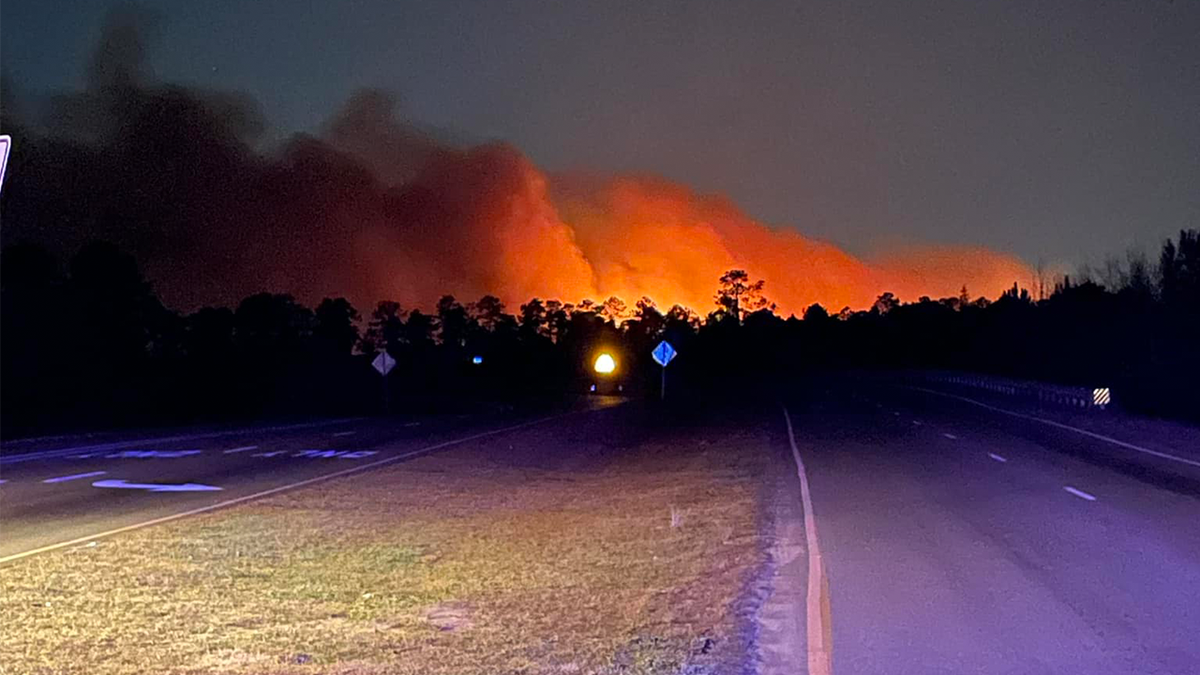
Brush Fires Force Evacuations in North and South Carolina
Brush fires ignited across North and South Carolina on Saturday, triggering mandatory evacuations and prompting urgent responses from fire officials and state authorities. The conflagrations, fueled by dry conditions and exacerbated by strong winds, pose a significant threat to property and lives, prompting a statewide burning ban in South Carolina.
In North Carolina, a fire raging in Polk County had consumed at least 400 acres by late Saturday night and remained entirely uncontained. The North Carolina Fire Service reported that structures were potentially at risk, with officials planning to assess the extent of any damage on Sunday morning. The Polk County government issued a dire warning on Facebook, urging residents along U.S. Highway 176, between the towns of Tryon and Saluda, to evacuate immediately. The Facebook post emphasized the rapid spread of the fire, despite the efforts of multiple fire departments working to contain the blaze. Tryon and Saluda are situated approximately 40 miles south of Asheville. The county designated the Polk County Meeting Place in Columbus as a shelter for displaced residents.
South Carolina faced its own challenges as Horry County Fire Rescue ordered the evacuation of several neighborhoods in the Carolina Forest area, located about 10 miles west of Myrtle Beach. Fire crews are actively battling a large wildfire near Carolina Forest. The fire rescue agency communicated through Facebook that they are carefully monitoring the weather forecast and prepared to adjust their strategy to prioritize life safety and property protection as conditions evolve. According to South Carolina GOP state Rep. Tim McGinnis, two planes and a Blackhawk helicopter were scheduled to begin dropping water on the fire on Sunday morning. McGinnis also stated that tractors were en route to assist in creating firebreaks around the perimeter of the fire, helping to limit its spread.
The severity of the situation in South Carolina prompted swift action from Governor Henry McMaster, a Republican. He declared a statewide burning ban, effective immediately, citing the dangerous wildfire conditions prevalent throughout the state. McMaster issued a stern warning, stating that anyone found starting a fire would face jail time as fire crews work tirelessly to control multiple fires across the state.
A red flag warning, issued by the National Weather Service, was in effect for western North Carolina and upstate South Carolina but expired late Saturday night. Red flag warnings indicate that critical fire weather conditions are either present or imminent. The combination of dry vegetation, low humidity, and strong winds can create a high risk of rapid fire spread.
The causes of the fires in both states are currently under investigation. The rapid spread of the Polk County fire in North Carolina highlights the volatility of the situation and the challenges faced by firefighters. The Horry County fire in South Carolina prompted a coordinated response, with aerial support and heavy equipment being deployed to assist ground crews.
The situation in both states underscores the importance of fire safety awareness and prevention, particularly during periods of dry weather and high winds. Residents are urged to exercise extreme caution with any potential ignition sources, such as cigarettes, machinery, and outdoor cooking equipment. Landowners are encouraged to clear brush and debris from around their homes and buildings to create defensible space.
The brush fires in North and South Carolina represent a serious threat to communities and ecosystems. The coordinated efforts of firefighters, emergency responders, and state authorities are crucial to containing the blazes, protecting lives and property, and mitigating the long-term impacts of the fires. The statewide burning ban in South Carolina serves as a stark reminder of the risks associated with open flames during periods of high fire danger. Residents in affected areas are encouraged to stay informed about evacuation orders, heed the advice of emergency officials, and take necessary precautions to protect themselves and their property.
As the fires continue to burn, officials will continue to monitor conditions and adjust their strategies as needed. The cooperation of residents, combined with the expertise of firefighters and emergency personnel, will be essential to bringing these wildfires under control and preventing further damage.
